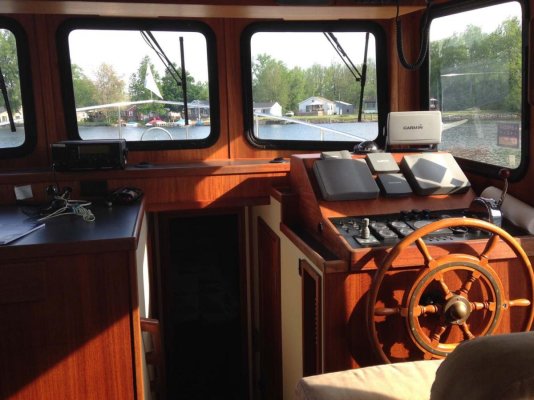Skipper_Vic
Member
David makes a good point for radar and I would never counsel against it but an almost equally important system is a "full duplex" AIS. Some VHFs and stand-alone "receive only" AIS units are out there but if everyone does this then only required vessels (commercial vessels) will be squawking their speed and position.
The single biggest feature of AIS is a quick look at the time and distance of "closes approach". Looking at several moving points on a radar screen and mentally guesstimating which might be a constant bearing-decreasing range situation can be taxing.
I know this may seem the opposite of minimalist but I find my Garmin AIS, as displayed on a Garmin chartplotter, to be intrinsically easy and reduces stress. Also, in Puget Sound, the vessel traffic control folks can "see me" and "know who I am" if they need to contact me.
The downside is you need a simple NMEA 2000 network to tie your AIS, chartplotter, and optionally your VHF. It is really just a few cables that plug together but then they just come up and say hi to each other.
Good Tech should make things easier ... I realize full well that is not always the case.
Vic
The single biggest feature of AIS is a quick look at the time and distance of "closes approach". Looking at several moving points on a radar screen and mentally guesstimating which might be a constant bearing-decreasing range situation can be taxing.
I know this may seem the opposite of minimalist but I find my Garmin AIS, as displayed on a Garmin chartplotter, to be intrinsically easy and reduces stress. Also, in Puget Sound, the vessel traffic control folks can "see me" and "know who I am" if they need to contact me.
The downside is you need a simple NMEA 2000 network to tie your AIS, chartplotter, and optionally your VHF. It is really just a few cables that plug together but then they just come up and say hi to each other.
Good Tech should make things easier ... I realize full well that is not always the case.
Vic

